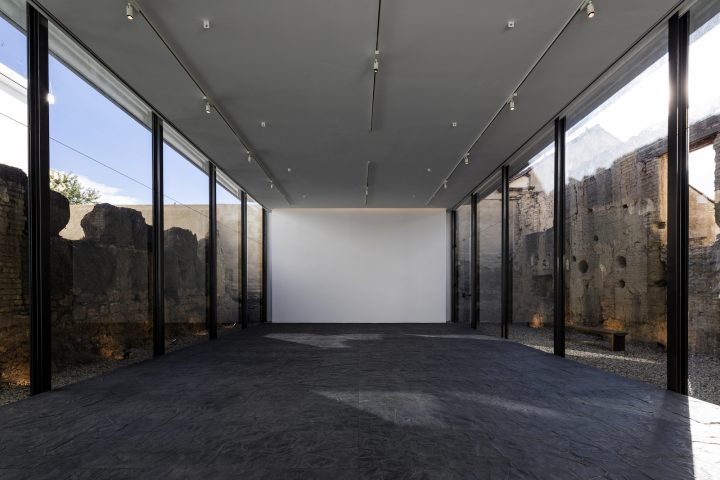
Artist Doris Salcedo has always thought of her sprawling installation Fragmentos (2018) as an “anti-monument.” To mark the end of her native Colombia’s 52-year-long guerrilla war, which left hundreds of thousands dead and millions displaced, Salcedo melted down 37 tons of weapons turned in by FARC (Revolutionary Armed Forces of Colombia) rebels as part of a peace agreement. She convened some of the countless women who were sexually assaulted during the conflict, and together they shaped the metal into 1,300 tiles. They then laid them on the floor of a gallery set among the ruins of a colonial-style house in Bogotá. Part exhibition space, part conceptual artwork, Fragmentos remembers the nation’s massive loss while rejecting and reshaping narratives that glorify war and weaponry.
Now, amid a violent state crackdown on demonstrations across the country and an alarming death toll at the hands of police, the government is accused of exploiting Salcedo’s installation in its campaign to mischaracterize the recent civil unrest. This Sunday, conservative populist president Iván Duque hosted a series of meetings with religious leaders and alleged victims of the conflict in the Fragmentos space to oppose what his administration described as “incitement of violence, hate, discord, and the destruction of society.”

The government’s occupation of the installation, which is operated by the Colombian Ministry of Culture, was rapidly condemned by artists and cultural figures locally and abroad, including Salcedo herself, who told Hyperallergic that Fragmentos had been “abusively used, breaking all the international norms of conservation and copyright.”
“This unconsented event happened in the middle of a terrible civil unrest that has left more than 30 citizens killed, dozens disappeared, hundreds injured, and cases of sexual abuse,” she said.
Salcedo noted that a series of works created by artist Francis Alÿs in Iraq, which reflect on war, grief, and resilience, are currently on view in the galleries of Fragmentos. Neither Alÿs, the board of directors of the museum, nor Salcedo were consulted before the meetings, she said. In photographs from the presidential event, Alÿs’s paintings appear to be covered by white fabric.
“This is a space that was made to reflect on Colombia’s bloody memory, not for tactics of control,” tweeted Mexican curator Cuauhtémoc Medina yesterday.
Over the last two weeks, thousands of Colombians have taken to the streets to protest deepening poverty, corruption, and inequality exacerbated by the ongoing COVID-19 pandemic. The state has retaliated by mobilizing its highly militarized riot control police force in a brutal repression of civilians that has been sharply condemned at an international level. During a candlelit ceremony last week, families of the victims mourned the dozens dead, among them a 13-year-old girl; at least 87 people have been reported missing.

In the wake of the massacre, the government’s usurpation of the profoundly symbolic Fragmentos space has also been viewed as the latest instance of “artwashing” by the country’s Ministry of Culture. On May 5, the National Museum of Colombia, which is run by the Ministry, issued a call for the country’s museums to serve as sites of “social transformation based on dialogue.” The statement rejected the “acts of violence” across the nation, but failed to mention the role of state-backed law enforcement. On his personal Instagram, Colombian Minister of Culture Felipe Buitrago posted a photo of a police officer ostensibly aiding a demonstrator along with the hashtag #NosEstánCuidando (“they are taking care of us”) — a pro-government twist on the much darker slogan trending among demonstrators: #NosEstánMatando (“they are killing us”).
“The Ministry of Culture is facilitating its infrastructure to organize the State repression,” said a Colombian cultural worker who spoke to Hyperallergic on condition of anonymity. “It is a clear symptom of the current political climate and also of the way culture is being appropriated as part of a fascist agenda.”
The Colombian Ministry of Culture has not responded to Hyperallergic’s request for comment.
Critics of Duque’s move to utilize Salcedo’s space are appalled by what they view as the government’s facade of peace and dialogue in the face of cruel, relentless brutality.
“What I envisioned could take place in Fragmentos is a difficult dialogue, which needs to take place during civil wars,” she continued. “But what took place was not a real dialogue. It was theater.”
0 Commentaires